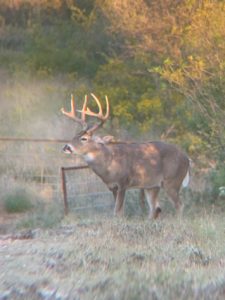 The National Deer Association’s 2023 Deer Report is hot off the press, and it’s jam-packed with interesting information for us whitetail nuts, like these 13 gems.
The National Deer Association’s 2023 Deer Report is hot off the press, and it’s jam-packed with interesting information for us whitetail nuts, like these 13 gems.
- Hunters in the Northeast, Southeast and Midwest regions combined killed 2,969,596 whitetail bucks during the 2021-22 season, the fourth highest buck kill in the past 10 seasons.
- The data shows that an impressive 40% of those were 3½ years of age or older. Hunters in the Southeast get the gold star for passing yearlings and shooting more mature deer; 84% of the bucks tagged in Dixie in 2021-22 were 2½ years or older.
- Top 5 states for buck harvest: Texas (447,972 bucks); Michigan (223,476); Wisconsin (153,112); Pennsylvania (145,320); Missouri (143,815).
- Top 3 states for doe harvest: Texas (379,958 antlerless); Pennsylvania (231,490); Alabama (177,842).
- Top 3 states with highest percentage whitetail harvest on private land: 1) Texas (99%); Georgia (97%); North Carolina (97%).
- Top 3 states with highest percentage annual harvest on public land: 1) Massachusetts (43%); New Jersey (30%); Rhode Island (28%).
- Annual deer harvest across U.S. by type of weapon: Firearm (66%); archery (25%); muzzleloader 9%).
- Top states for percentage of annual harvest by archery (vertical and crossbow): New Jersey (64%) and Connecticut (51%).
- Top states percentage of harvest by muzzleloader: Rhode Island (49%) and Virginia (23%).
- Chronic Wasting Disease (CWD) was discovered for the first time ever in Alabama, Louisiana and North Carolina in 2022. Two states, Kentucky and Oklahoma, were prompted to activate their CWD response plan after detection of a CWD-positive deer in a neighboring state.
- Hemorrhagic Disease (HD) has now been confirmed in free-ranging whitetails in 24 states. Summer/fall of 2022 was a light to moderate year for HD, with the most notable outbreaks in southern Indiana and southern Ohio. New Hampshire documented its first-ever case of HD in a wild whitetail deer.
- NEW CONCERN: High levels of a man-made pollutant called “perfluoro octane sulfonic acid,” which is the most common form of PFAS (per- and polyfluoroalkyl substances) were discovered within wild deer in some locations, causing a few state agencies to issue “Do Not Eat” advisories. These chemicals are widely used and break down slowly over time. Experts continue to study and learn about PFAS, and close monitoring is required in the future.
- The NDA asked state and provincial wildlife agencies to list their biggest issues/concerns relating to deer management in the future. The top 3 issues by far were: 1) CWD; 2) hunter access to available lands; and 3) declining hunter numbers.
Click here for a free download of the entire 2023 Deer Report.





